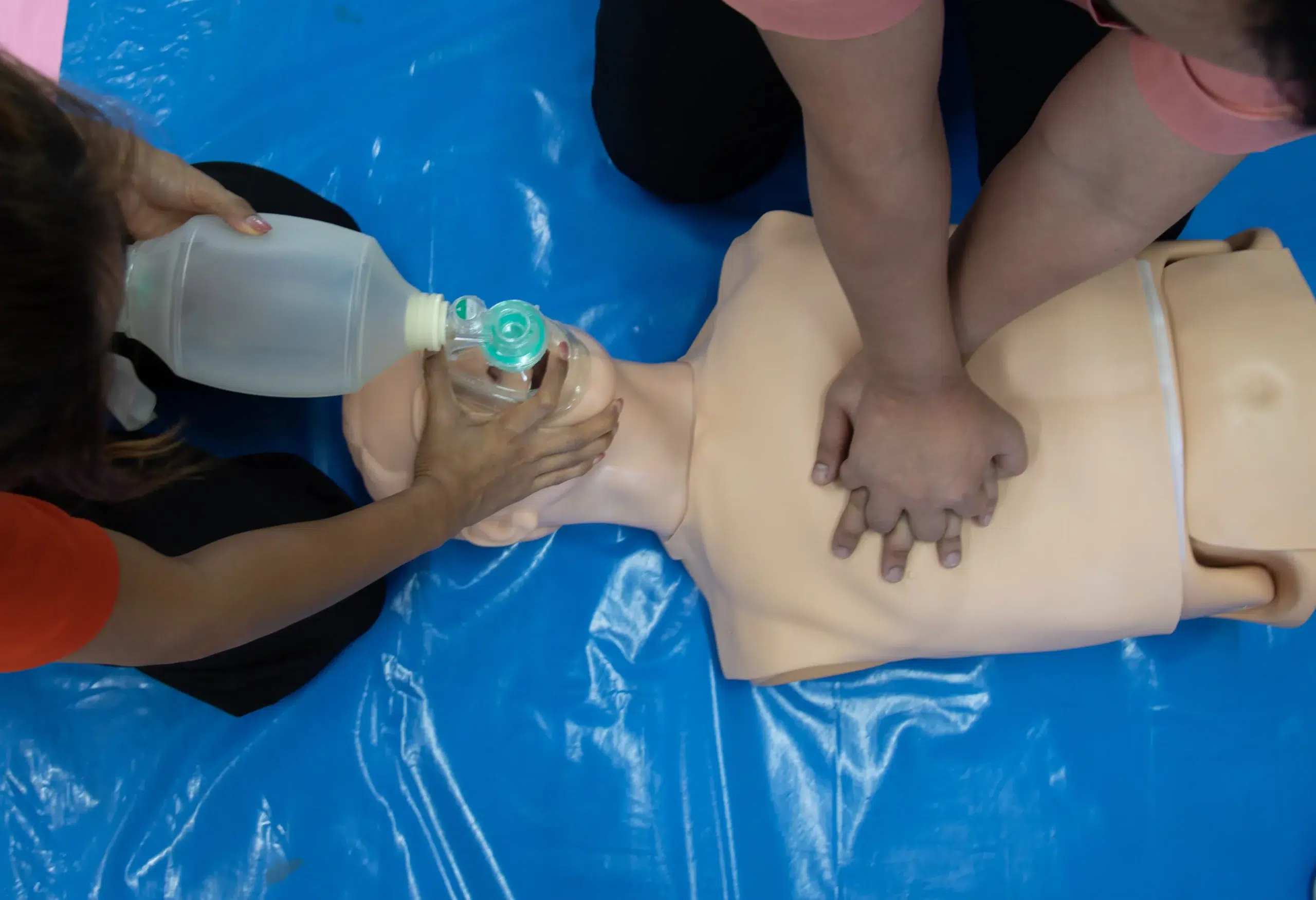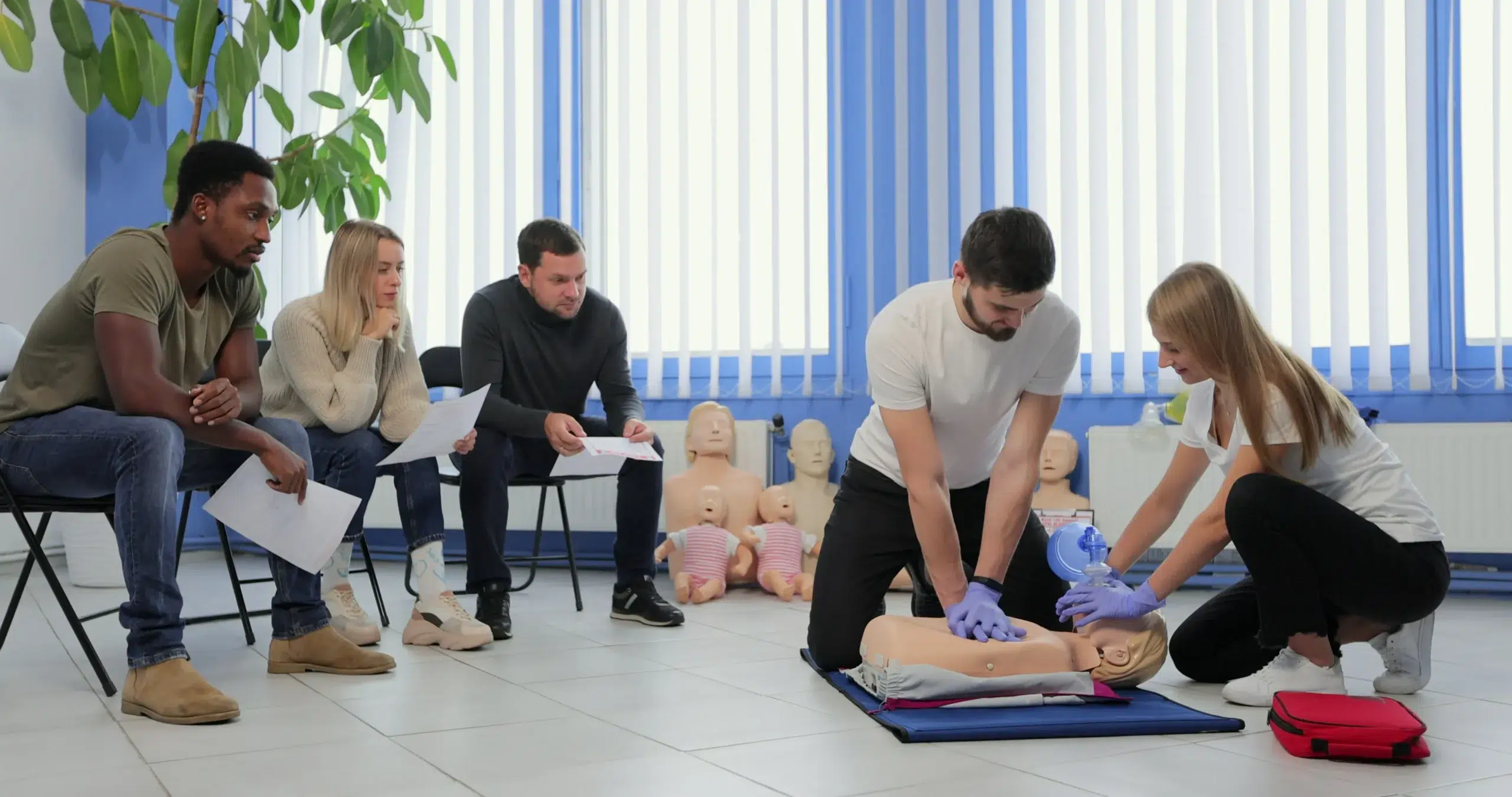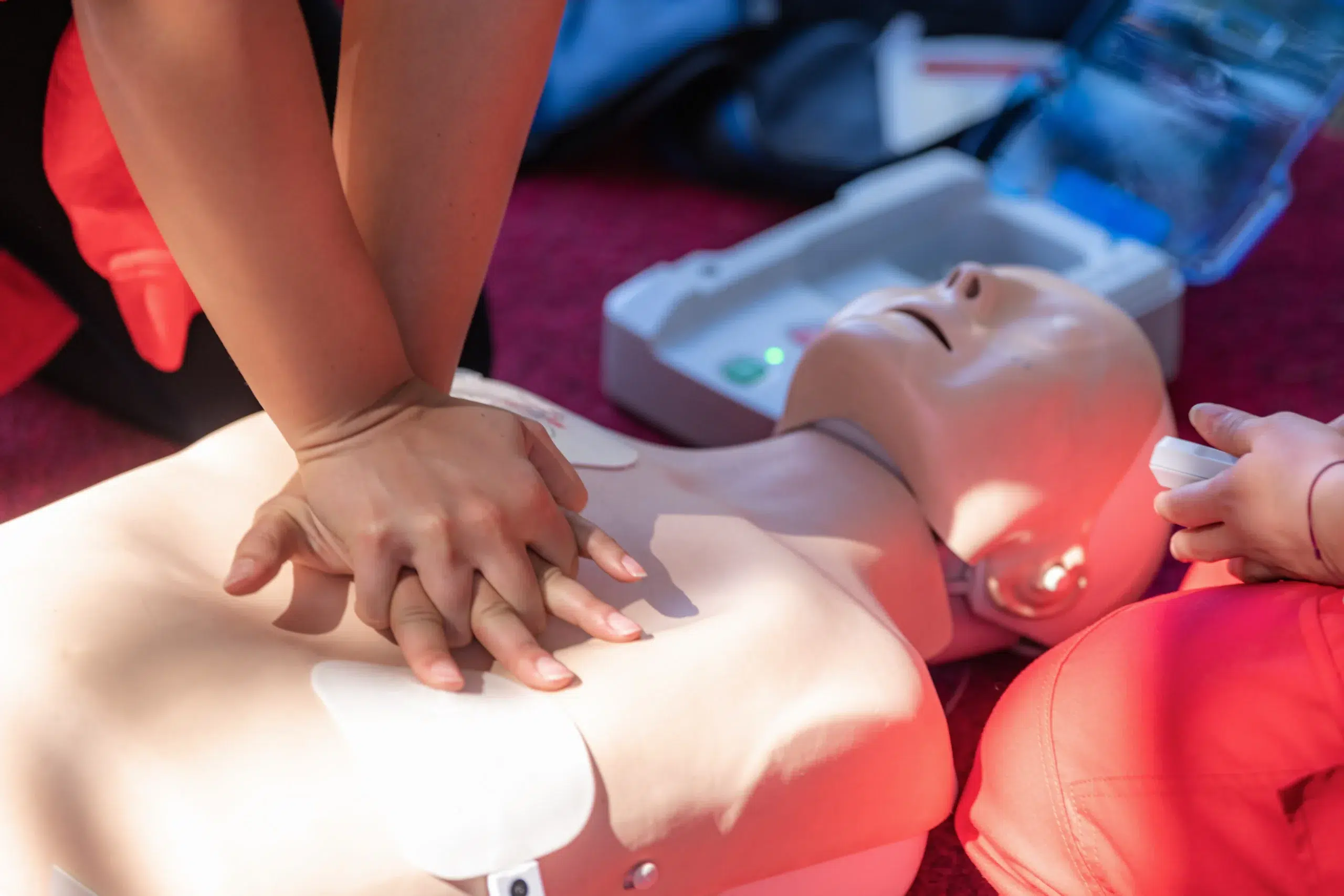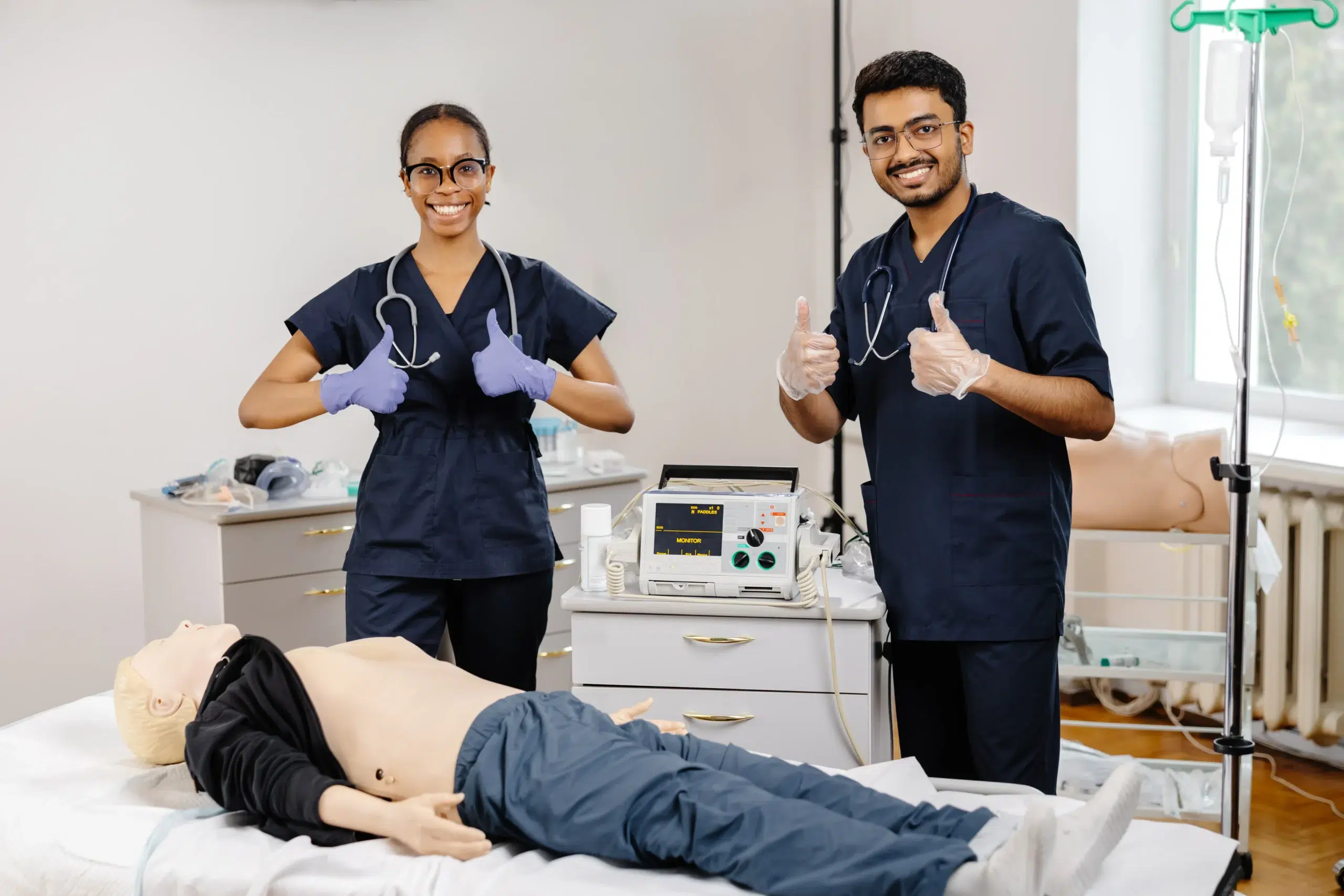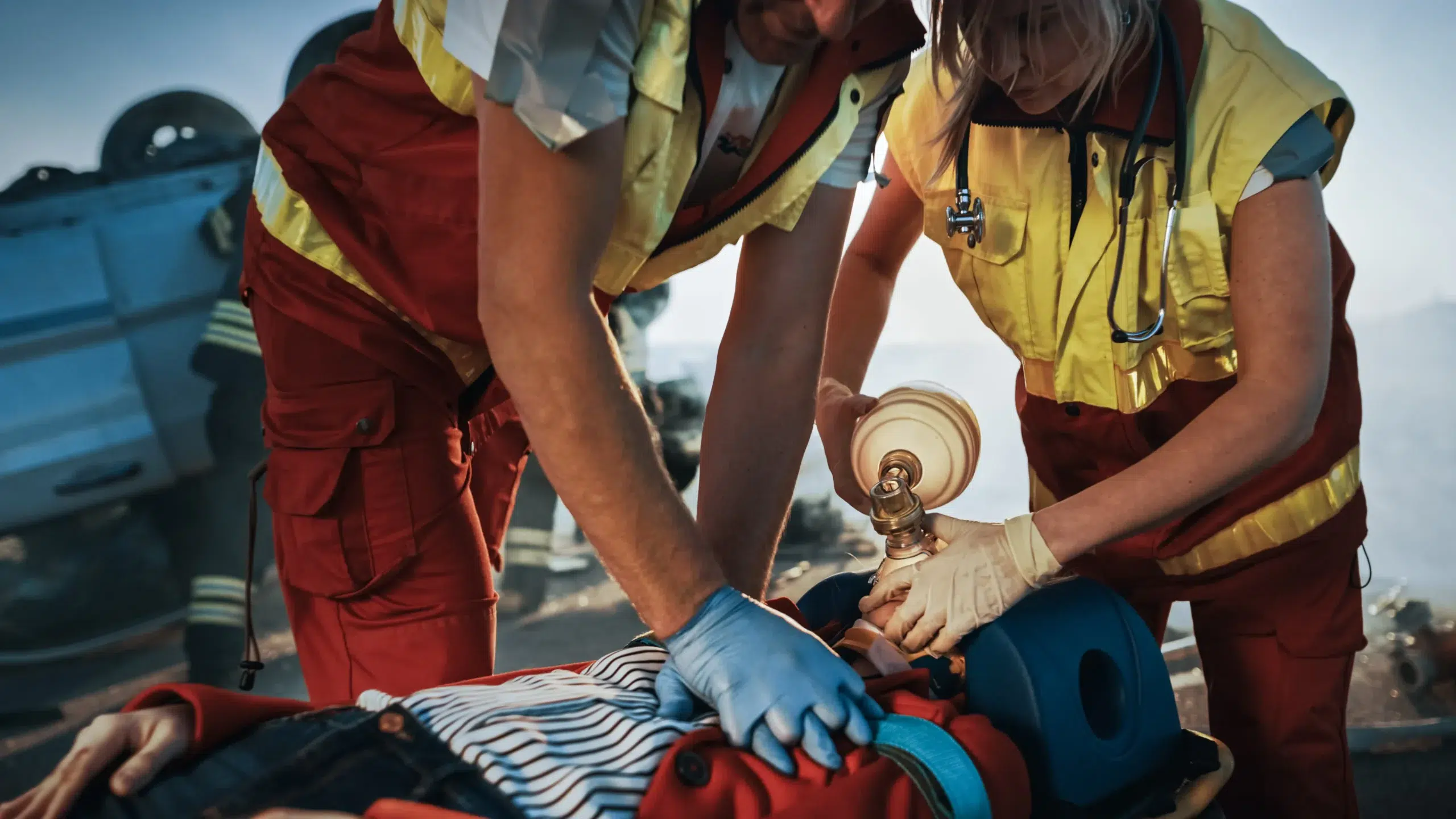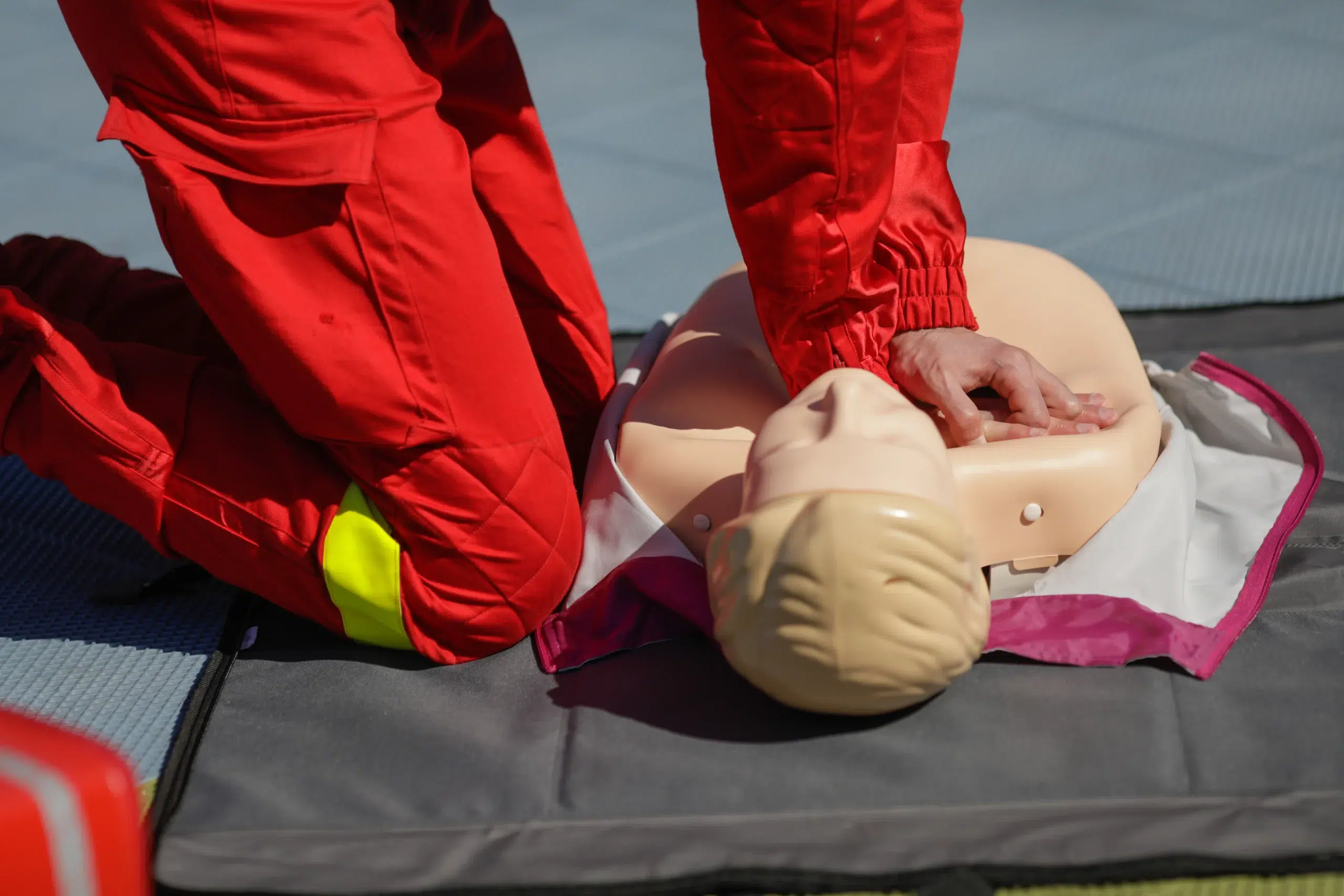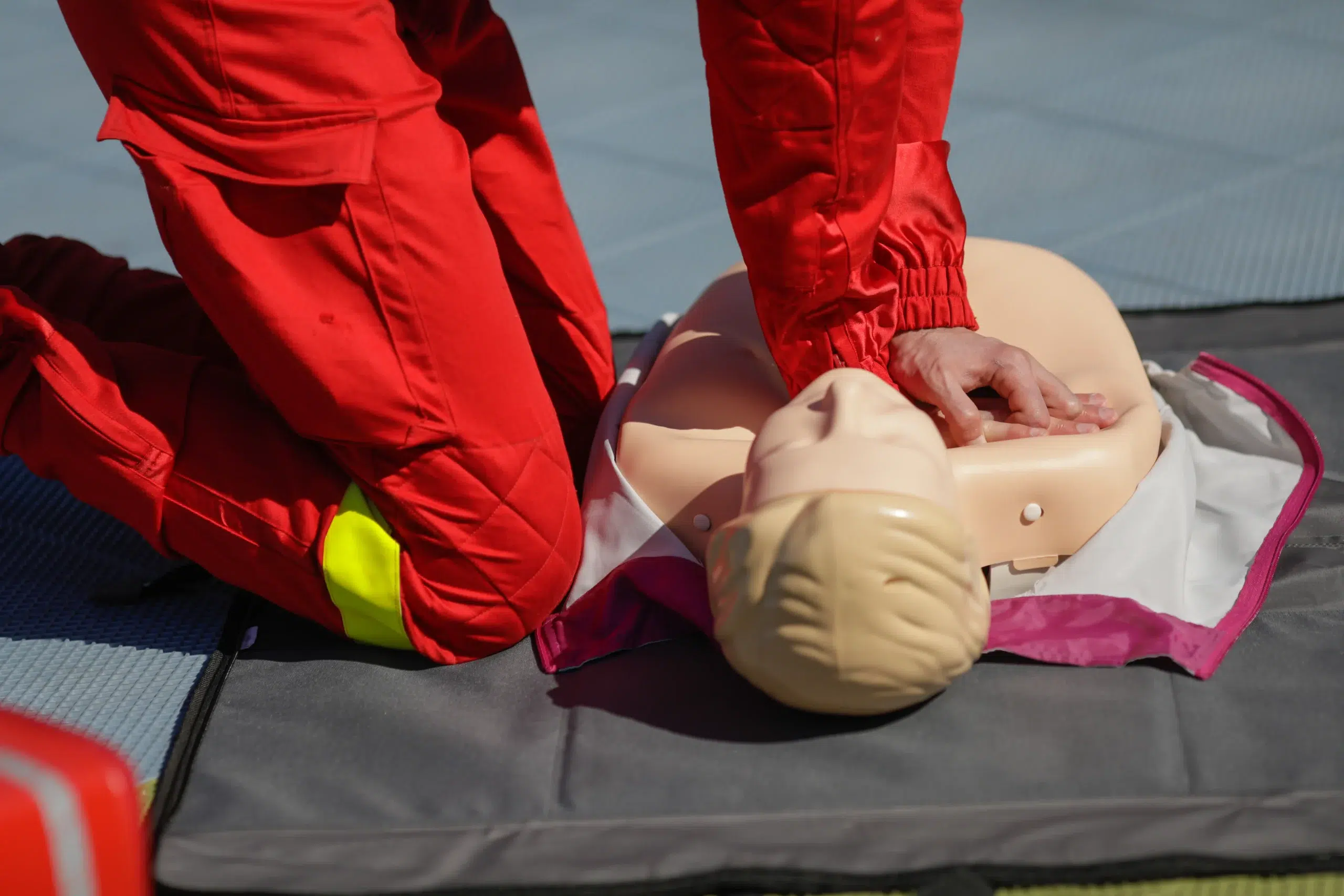Okay, so your BLS certification is about to expire—don’t panic! It happens. Staying current with your BLS skills is easier than you think, especially with so many convenient recertification options available. Whether you’re a healthcare professional, a teacher, a lifeguard, or anyone who needs BLS, finding a “BLS recertification near me” is the first step to keeping your lifesaving skills sharp. This guide breaks down everything you need to know about BLS recertification, from understanding the process to finding the right course and preparing for your renewal. We’ll cover the essential skills you’ll refresh, the latest updates in emergency care, and how to choose a training provider that fits your needs and budget. Let’s get started!
Key Takeaways
- Maintain your lifesaving skills with regular BLS recertification: Staying current ensures you’re prepared to respond effectively in emergencies, providing high-quality care when it matters most. Explore various course formats and find a provider that fits your needs.
- Find affordable and convenient recertification options: Don’t let cost or scheduling conflicts hold you back. Many providers offer flexible online and in-person courses to accommodate busy professionals. Research options and compare pricing to find the best value.
- Prepare for your recertification course and maximize your learning: Review key concepts, practice essential skills, and approach your training with a positive attitude. Remember, BLS recertification is an investment in your professional development and your ability to provide critical care.
What is BLS Recertification & Why is it Important?
BLS (Basic Life Support) certification equips you with the skills to respond to life-threatening emergencies. It’s a vital credential for healthcare providers and other professionals like lifeguards, fitness instructors, teachers, and even parents. This certification focuses on providing immediate care during cardiac arrest, strokes, and choking incidents.
BLS certification expires every two years. There’s no grace period, so staying current with your recertification is essential. This involves a refresher course and an exam to demonstrate your continued competence, ensuring your skills are sharp and aligned with the latest American Heart Association guidelines. It’s about maintaining a high level of readiness.
Why is this so important? Imagine being the only person present when someone collapses. Your swift, confident actions, backed by up-to-date BLS training, could save a life. Regular BLS training reinforces essential skills like high-quality CPR, using an AED, and providing relief for choking victims. It also keeps you informed of any updates to emergency care procedures. Beyond the potential to save lives, maintaining your BLS certification demonstrates your commitment to providing safe and effective care. It shows you take your role seriously and are dedicated to staying prepared.
Find the Right BLS Recertification Provider
Finding the right BLS recertification provider is key to a smooth and effective recertification process. Several reputable organizations and institutions offer BLS recertification courses, each with its own advantages. Let’s explore some of your options:
Safety Training Seminars
Safety Training Seminars offers BLS certification and recertification courses designed to fit your schedule and keep your skills current. Our recertification classes cover essential skills like high-quality CPR, AED use, and choking relief, giving you the confidence to handle emergencies. We understand the demands of your profession, which is why we offer a range of course times and a dedicated support team. Serving San Jose, Santa Clara, and Sunnyvale, we’re conveniently located and committed to providing high-quality training at competitive prices. Check out our low price guarantee.
American Heart Association
The American Heart Association (AHA) provides a widely recognized BLS certification. You can renew your BLS card through several AHA-authorized training centers. These providers offer various course formats, including online and in-person options, often covering everything from online coursework and skills testing to issuing your official certification card. Look for training centers near you that offer AHA BLS courses.
American Red Cross
The American Red Cross is another well-established organization offering BLS renewal and recertification. With a long history of providing first aid, CPR, and AED training, the Red Cross offers a streamlined recertification process. Their courses are designed to be fast, simple, and easy, making it convenient to maintain your certification.
Local Hospitals & Medical Centers
Many local hospitals and medical centers offer BLS certification courses for both their staff and the wider community. These courses are often integrated into their training programs and can be a convenient option if you’re already affiliated with a particular institution. Check with hospitals or clinics to see if they offer BLS recertification courses. Word-of-mouth can also be helpful; ask colleagues who have recently completed their BLS recertification for recommendations.
How Much Does BLS Recertification Cost?
One of the most common questions about BLS recertification is understandably about cost. It’s an important factor for anyone, especially if you’re covering the expense yourself. Let’s break down what you can expect and explore some common misconceptions about BLS recertification pricing.
Typical Price Ranges
BLS recertification costs vary but generally fall between $50 and $120. Some providers, like Berkeley CPR Classes, offer BLS for around $120, covering online coursework, the skills test, and your certification card. Others, such as Affordable ACLS, offer recertification for around $49. Safety Training Seminars offers competitive pricing and a low price guarantee for our courses in San Jose, so you can feel confident you’re getting a great value.
Factors Influencing Cost
Several factors influence the final price of your BLS recertification. Location plays a role, as prices differ between regions. The course format—online or in-person—also affects the cost. In-person courses sometimes have added expenses for facility use and equipment. Finally, each training provider sets its own pricing, varying based on overhead and specific resources. This guide helps explain how these factors can impact cost. At Safety Training Seminars, we strive to keep our courses accessible with our low price guarantee.
Debunking Cost Myths
It’s easy to assume BLS recertification is an unnecessary expense, but consider its long-term value. A current BLS certification is an investment in your career and your ability to provide critical care. While cost is often a concern, many affordable options exist, especially when you consider maintaining your certification’s potential benefits. Don’t let cost be a barrier—explore the available resources and find a program that fits your budget. This article debunks common myths surrounding BLS certification costs. We encourage you to contact our team to discuss your options and any questions you may have about financing your recertification.
Online vs. In-Person BLS Recertification: Which is Right for You?
Choosing between online and in-person BLS recertification depends on your learning style, schedule, and budget. Both options have their advantages, so let’s explore the pros and cons to help you decide which path is best for you.
Benefits of Online Courses
Online recertification courses offer incredible flexibility. You can learn at your own pace, reviewing material as needed, and fitting the training around your schedule. This format is especially helpful for those balancing work, family, or other commitments. It also removes the need for travel, saving you time and expense. If you’re a self-directed learner and prefer a flexible learning environment, online recertification might be a good fit. Providers like ACLS Medical Training offer fully online BLS recertification courses that cover all the required material.
Advantages of In-Person Training
In-person training offers a hands-on, immersive learning experience. You’ll practice skills like CPR and AED use with instructors and receive immediate feedback. This direct interaction can significantly boost your confidence and skill level. The in-person setting also allows you to connect with other healthcare professionals. If you thrive in a structured environment and value direct interaction with instructors, in-person training might be a better choice. Safety Training Seminars offers in-person BLS recertification courses in San Jose, CA, providing hands-on training and instructor feedback.
Hybrid Options
For those wanting a balance between flexibility and hands-on learning, hybrid courses offer an appealing solution. These programs usually combine online coursework with in-person skills sessions. You can complete the cognitive portion online at your own pace and then attend a skills session to demonstrate your proficiency. This blended approach lets you benefit from the flexibility of online learning while still receiving the personalized instruction and feedback essential for mastering BLS skills. Consider factors like your learning style, schedule, and budget when selecting a BLS recertification provider. Some organizations offer hybrid courses that combine online learning with in-person skills assessments.
Get BLS Recertified: A Step-by-Step Guide
Getting recertified in BLS is straightforward. Here’s a step-by-step guide:
Enrolling in a Course
First, choose a course that fits your learning style, schedule, and budget. Do you prefer hands-on, in-person instruction or the flexibility of online learning? Consider your availability on weekdays versus weekends. Safety Training Seminars offers various BLS courses in San Jose, making it easier to find one that works for you. Finally, compare pricing between different providers.
Course Length & Time Commitment
BLS recertification courses typically run between 2.5 and 4.5 hours. The exact time commitment depends on the provider and whether you choose an online or in-person format. If you opt for in-person training, remember to account for travel time. Online courses offer more flexibility, allowing you to complete the training at your own pace.
What to Expect During Recertification
During your BLS recertification course, you’ll review and practice essential life-saving skills, including CPR for adults, children, and infants. The training also covers AED use and relieving choking. You’ll learn the latest guidelines and updates from the American Heart Association, ensuring you’re prepared for various emergencies. After completing the course and passing an exam, you’ll receive your updated BLS certification card.
Essential Skills & Updates in BLS Recertification
BLS recertification isn’t just about renewing your card—it’s about refreshing vital lifesaving skills and staying up-to-date with the latest advancements in emergency care. Here’s what you’ll cover:
High-Quality CPR
High-quality CPR is the cornerstone of successful resuscitation. It involves delivering effective chest compressions at the correct rate and depth, allowing for full chest recoil. This ensures adequate blood flow to the brain and other vital organs. Consistent practice and adherence to the latest guidelines are essential for mastering this technique. Our BLS courses in San Jose can help you refine these skills.
AED Use
Automated External Defibrillators (AEDs) are game-changers in cardiac arrest scenarios. BLS recertification reinforces the proper use of AEDs, from quickly assessing the situation to correctly placing the pads and delivering the shock. Confidently operating an AED can dramatically improve a person’s chances of survival.
Choking Relief
BLS training also covers techniques for assisting a choking victim, including the Heimlich maneuver and back blows. These skills are crucial for quickly clearing airway obstructions and preventing serious complications. Our CPR and First-Aid courses cover these essential techniques.
Recent Guideline Changes
Emergency care guidelines evolve with ongoing research and best practices. BLS recertification ensures you’re current with the latest recommendations from organizations like the American Heart Association. These updates may include changes to CPR techniques, AED protocols, or other essential procedures. Staying informed is key to providing effective care. For more information on our commitment to affordable training, see our low price guarantee.
Prepare for Your BLS Recertification
Getting ready for your BLS recertification involves more than just signing up for a class. A little prep work goes a long way toward ensuring you’re ready to renew your skills and knowledge. Here’s how to get prepared:
Review Course Materials
Before your recertification course, refresh your knowledge of core BLS concepts. Many providers, like ACLS Medical Training, offer online resources or include training materials with their courses. Check with your chosen provider to see what’s available. Reviewing key topics like high-quality CPR, AED use, and choking relief will give you a solid foundation for the recertification process. Also, take a look at the course content offered by your BLS certification provider. See if they offer any additional training opportunities or specialized courses that might interest you. Thinking about adding PALS certification to your skillset? Now’s a good time to explore those options.
Practice Essential Skills
Hands-on skills are crucial for effective BLS. If possible, practice these skills before your recertification class. You can review videos demonstrating proper CPR technique and AED use online. Even mentally rehearsing the steps can be beneficial. This practice will not only boost your confidence but also help you identify any areas where you might need extra attention during the course.
Mental Preparation Tips
Approaching your BLS recertification with the right mindset can make all the difference. Remember why these skills are so important—they can save lives. It’s easy to get caught up in the cost of recertification, but think of it as an investment in your professional development and your ability to provide critical care. Focus on the value of the BLS training and the positive impact it has on your career and the community you serve. A positive attitude and a commitment to learning will help you get the most out of your recertification experience.
Choose the Right BLS Recertification Provider
Finding the right BLS recertification provider is crucial for a positive and effective learning experience. It’s a bit like choosing the right gym—you want a place that fits your style, schedule, and budget. This section breaks down how to find the perfect match for your BLS recertification needs.
Research Provider Reputations
Start by researching the reputation of potential providers. Look for reviews and testimonials from past students. A provider with consistently positive feedback is more likely to offer a high-quality course. Sites like Yelp and Google Reviews can be great resources for gathering insights. Check if the provider is affiliated with a reputable organization like the American Heart Association. This can often indicate a commitment to adhering to the latest guidelines and standards. At Safety Training Seminars, we’re proud of our reputation for providing excellent BLS certification courses.
Key Factors to Consider in Reviews
When reviewing feedback, pay attention to comments about the instructors, course materials, and the overall learning environment. Consider factors like teaching style. Do instructors offer hands-on practice and personalized feedback? Think about your learning style and what kind of environment you thrive in. Consider the provider’s schedule and whether it aligns with your availability. Finally, factor in your budget. BLS recertification costs can vary, so finding a provider that offers good value is essential. If a provider offers additional training or specialized courses, that might be a bonus if you’re looking to expand your skillset. We offer a range of courses, including CPR and First-Aid, to meet diverse needs.
Questions to Ask Before Enrolling
Before enrolling, it’s always a good idea to ask potential providers a few key questions. Inquire about their course offerings, including what’s covered in the training materials and whether they incorporate online coursework or skills tests. Ask about the qualifications and experience of their instructors. Knowing the instructors’ backgrounds can give you more confidence in the quality of instruction. Be sure to ask about the total cost, including any additional fees. Getting a clear understanding of the cost upfront will help you avoid any surprises. Our low price guarantee ensures you’re getting the best possible value for your BLS recertification.
Related Articles
- BLS Courses in San Jose: Your Complete Guide – San Jose CPR Classes
- BLS Renewal in San Jose: Your Guide – San Jose CPR Classes
- BLS Classes in Santa Clara: The Complete Guide – San Jose CPR Classes
- BLS Certification in San Jose: Your Comprehensive Guide – San Jose CPR Classes
- HeartCode BLS San Jose: Your Complete Guide – San Jose CPR Classes
Frequently Asked Questions
How often do I need to recertify my BLS certification? BLS certification is valid for two years. You’ll need to recertify before your current card expires to maintain your credentials. There’s no grace period, so mark your calendar and plan.
What’s the difference between online and in-person BLS recertification? Online recertification offers flexibility, allowing you to learn at your own pace and complete the coursework from anywhere. In-person classes provide hands-on training with instructors, offering immediate feedback and a chance to practice skills in a real-world setting. Both options fulfill the requirements for recertification; the best choice depends on your learning style and schedule.
How much does BLS recertification typically cost, and what factors influence the price? BLS recertification costs typically range from $50 to $120, depending on the training provider, location, and course format. In-person courses sometimes cost a bit more due to facility and equipment expenses. Always confirm the total price before enrolling to avoid surprises.
What key skills are covered in a BLS recertification course? BLS recertification covers essential life-saving skills, including high-quality CPR for adults, children, and infants, AED use, and relieving choking. The course also covers the latest guidelines and updates from the American Heart Association, ensuring your skills are current.
How can I prepare for my BLS recertification course? Reviewing core BLS concepts and practicing essential skills before your course can significantly improve your learning experience. Many providers offer online resources or study materials to help you prepare. Mentally rehearsing the steps and familiarizing yourself with the latest guidelines can also boost your confidence.


